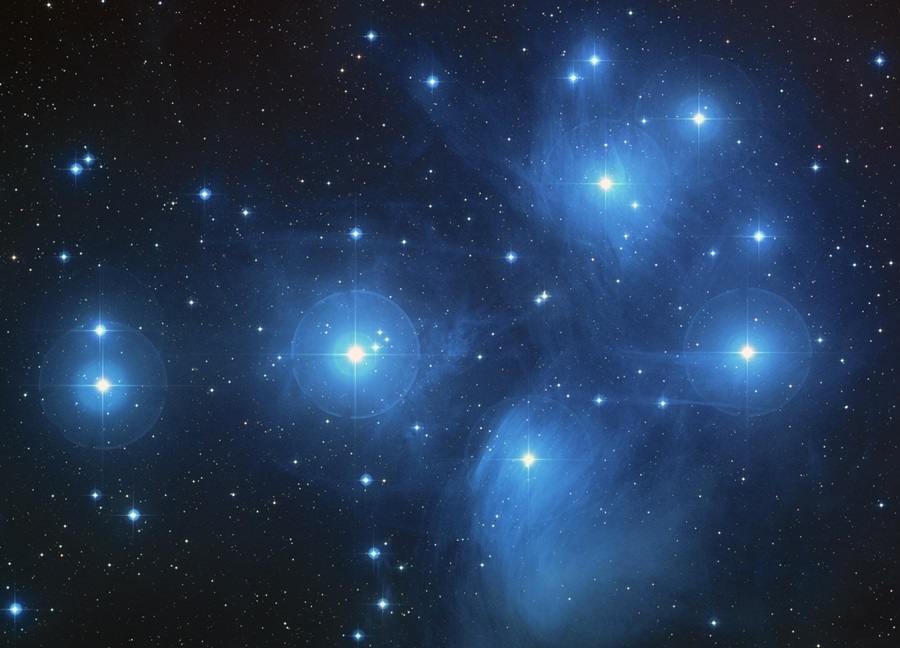The colorful nightly parade of planets that began in January continues this month and next, with Venus, Jupiter, and Mars all visible after dark — clouds permitting. These planets can serve as winter guides to help you go deeper in the night sky. Here, I follow them to find constellations that are familiar to many people as signs of the zodiac, and from there to learn some lesser-known stars. There’s more to the winter sky than just Orion.
It’s so easy to see these three planets right now. Step outside after nightfall and look up. Venus will probably draw your attention first. Our sister planet shines in the west so bright that it’s often mistaken for a UFO — or, as the U.S. military now prefers, UAP, for unidentified anomalous phenomenon. (I’ll stick with UFO, thanks.)
Venus is hanging out right now in Pisces, a constellation that isn’t so easy to identify. Use a star map or app to get a sense of Pisces’s shape and orientation. Then look back at Venus, floating right in the middle of it (the name is the Latin plural for fish). Can you now trace the forms of two fish? One head is below Venus, the other above.

After admiring the beautiful light reflected off Venus’s deadly, corrosive atmosphere, direct your attention higher in the sky. You’ll find another very bright star, this one golden-white in contrast with Venus’s blue-white. That’s Jupiter, the largest planet in our solar system, right in the middle of Taurus, the bull.
Taurus is a fun constellation for identifying stars. Close by Jupiter you’ll see a faint but distinctly red-orange star. That’s Aldebaran, the eye of the bull. It’s a red giant star, cooler than our sun but about 45 times its size and about 65 light-years away. Can you see the very small, V-shaped cluster of stars right by Aldebaran? That’s the Hyades star cluster and the face of the bull. How about the two stars to the east of Aldebaran that mark the bull’s horns?
Also near Jupiter and Aldebaran is one of my favorite celestial objects, the Pleiades star cluster. The stars of the Pleiades are so close together you might think them a single star at first, but keep looking a little west of Jupiter and you’ll see several. There are actually more than a thousand stars in the cluster, but only six are visible to the unaided eye. These are very young stars, only about 100 million years old. Our own Sun began life in a cluster much like the Pleiades.
Before moving past Jupiter, take note of Aries, which lies between Pisces and Taurus. The ram is a difficult constellation to pinpoint, taking the form of a short arc of stars between the Pleiades and the topmost fish of Pisces. A star map should help you find it.
From there, move on to Mars and the constellation Gemini. Look high in the sky, almost directly overhead, and turn your gaze east of Jupiter. You’ll quickly reach what looks like a bright red star, brighter than Aldebaran. That’s Mars, which right now lies precisely between the twins of Gemini. Look for two bright stars very close to and forming a small triangle with Mars. Those are Castor and Pollux, the stars that are imagined as the heads of the twins.
Cancer and Leo lie beyond Gemini to the east, but there are no bright stars to show the way. With your handy star map or app, see if you can identify them.
The other constellations of the zodiac are below the horizon in the evening at this time of year. The planets that right now serve as a guide to finding Pisces, Aries, Taurus, and Gemini will not always do so; by May, Venus, Mars, and Jupiter will appear quite far from where you see them now.
The planets travel across the sky very differently from the stars. They appear and disappear at different times of year; they seem to reverse direction; they vary in brightness; they are sometimes visible only at twilight or only at dawn. That’s why the ancient Greeks called them wandering stars: planetes asteres, and thus our word planet.
But you can rely on stars like Aldebaran or clusters like the Pleiades. They’re not going anywhere, at least not from the perspective of a human lifetime or even a hundred lifetimes. (Check back in a few tens of thousands of years and the night sky may look quite different.)
The main thing is this: It’s pleasing to look up and see distinct forms and patterns rather than scattered, amorphous stars. And winter’s bright planets can help you get started in finding your way.
Know that as you get more familiar with the night sky, you’ll want more reliable celestial markers, though. You’ll get there, bright star by bright star, constellation by constellation. Clear skies!



